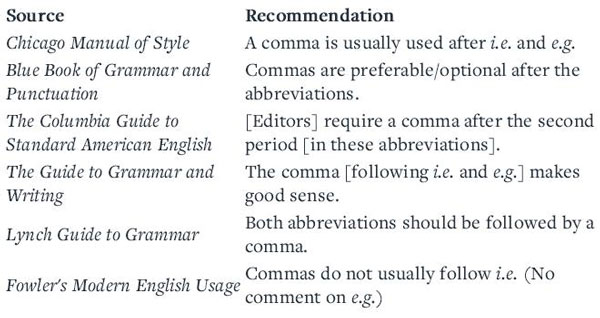
I.e.和e.g.啥意思?
I.e. and e.g. are both abbreviations for Latin terms. I.e. stands for id est and means roughly "that is." E.g. stands for exempli gratia, which means “for example.” "Great. Latin," you're probably thinking. "How am I supposed to remember that?”
I.e.和e.g.都是拉丁语缩写,i.e.代表id est,意为“也就是说,即”(that is),e.g.代表exempli gratia,意思是“举个例子”(for example)。你可能在想,“很好,拉丁语,可我怎么记得住啊?”
如何记住两者的区别
Forget about i.e. standing for "that is" or whatever it really means in Latin. From now on, i.e., which starts with i, means “in other words,” and e.g., which starts with e, means “for example.” I = in other words. E= example.
不要去管i.e.的意思或者它的拉丁文全拼。从现在开始,i打头的i.e.代表in other words(也就是说),而e打头的e.g.代表for example(举例说明)。字母I= in other words,字母E= example。
注意事项
Don't italicize i.e. and e.g.; even though they are abbreviations for Latin words, they've been used for so long that they're considered a standard part of the English language.
I.e.和e.g.不用斜体。虽然二者都是拉丁文缩写,但这种用法由来已久,已被视为英语中的一种标准用法。
Also, remember that they are abbreviations, so there is always a period after each letter.
另外,记住i.e.和e.g.都是缩写,所以每个字母后面都有点号。
A comma is usually used after i.e. and e.g.
I.e.和e.g.后面通常要加逗号。
福格蒂认为,使用i.e.和e.g.时应该在后面加逗号。她查阅了六本书写规范指南,其中有五个都推荐这种用法。

掌握了这对缩写的用法后,我们来做一个小测试。看看下面4个句子,哪些是正确的,哪些是错误的?
1. The evaluation noted that the employee had frequently exhibited irresponsible behavior (i.e., coming to work late, failing to complete projects).
2. Writing instructors focus on a number of complex skills that require extensive practice (e.g., organization, clear expression, logical thinking, etc.)
3. The general rule is that if a number can be expressed in three words or fewer, it should be written out (e.g., two hundred seventy).
4. Use a comma to enclose (i.e. both before and after) the year in a month-day-year sequence.
以上四句话都不准确。
第一句中,应该用e.g.而不是用i.e.,因为括号里的内容是对“irresponsible behavior”的举例。
第二句中,意思是正确的,但是不应该在句末使用etc.,因为e.g.本身就暗示这只是一部分例子。
第三句中,e.g.不应该使用斜体。
第四句中,通常来说,i.e.和e.g.后面都需要加逗号。
以上4句话的正确表达如下:
1. The evaluation noted that the employee had frequently exhibited irresponsible behavior (e.g., coming to work late, failing to complete projects).
评估报告指出,在雇员中存在许多不当行为(比如迟到,完不成工作)。
2. Writing instructors focus on a number of complex skills that require extensive practice (e.g., organization, clear expression, logical thinking).
写作教师强调那些需要大量练习的复杂技巧(比如结构,清晰的表达和逻辑性)。
3. The general rule is that if a number can be expressed in three words or fewer, it should be written out (e.g., two hundred seventy).
一般来说,如果一个数字能够用三个或三个以下单词表达出来,那么就应该将其拼写出来(比如two hundred seventy) 。
4. Use a comma to enclose (i.e., both before and after) the year in a month-day-year sequence.
“月-日-年”这样表达日期的形式,“年”应该用逗号分隔出来(即在其前后都使用逗号)。
Source:董静&丹妮 from language.chinadaily.com.cn
















